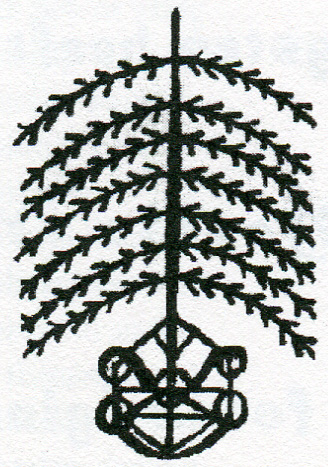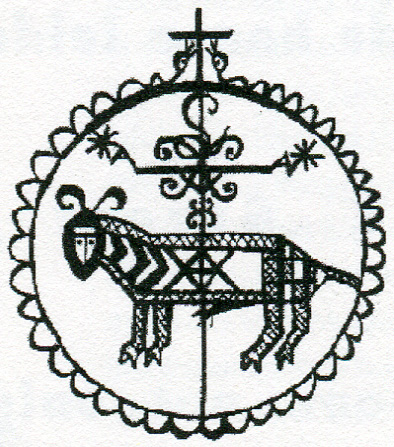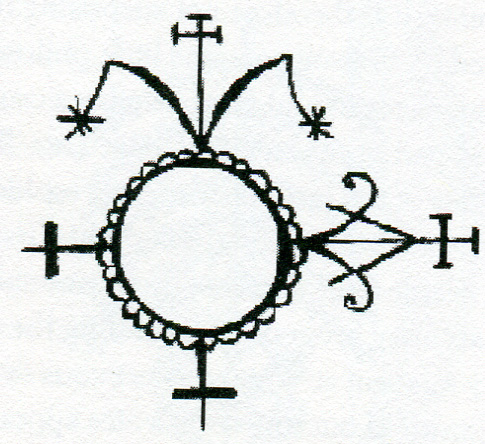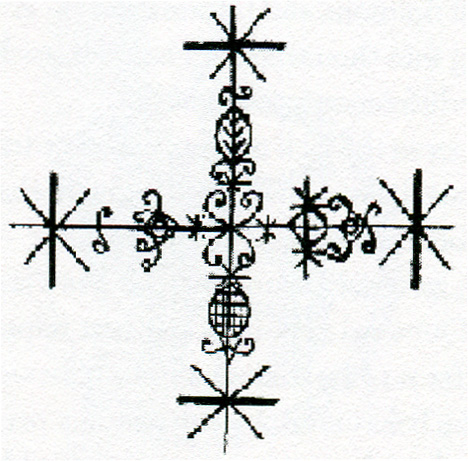The world is no longer pervaded by a stable order that directs its metamorphoses according to a plan. Rather, things all seem to be engaged in a continual, unbridled mutation from within, i.e., beginning on a microscopic level one step beyond our experience and perception. This may not actually be so, but this is how the world increasingly appears in the instinctive realm in which myths and religions have their origins.
Our fear is no longer of the one, great enemy, the big bomb, the titanic struggle of global powers, the vengeance of the one, true God, but of smaller enemies much closer to home: a gangland killing or terrorist attack in our city, the sudden disintegration of a state into warring militias, the influence of a wide range of criminal organisations, an epidemic of barely comprehended deadly illnesses. The primitive organ that supplies our fear with information is picking up signals of a spontaneous fragmentation of the social 'shape' of our lives: of the alliances, sciences, nations, bodies, media. From within.
The violence of history is being played out increasingly on a microscopic stage: the value of money depends on the milliseconds in which it is traded; the images that support our conception of the world have fragmented in manipulable pixels; the very basis of our political and cultural thought -- the public exchange of opinions and information -- is fragmenting into thousands of channels, each largely a matter of indifference to the others.
It is not even the lack of a universal order or an unambiguous division into good and evil that evokes fear -- it is more the impression that nothing -- knowledge, material, community -- has a stable form anymore. Outward appearance or first impression seem to offer no guarantee at all for a trustworthy notion of the behaviour of a substance, a person or a group. We don't know exactly who is molding or writing what, but everything in our world seems to have become re-writable and pliable. The displacement of a couple of molecules turns a guiltless micro-organism into a fatal illness; the replacement of a couple of genes turns a known and trusted animal or human being into a monster. A couple of taps on a keyboard change a wealth of information into an indecipherable secret message. The heart-rending journalistic photographs turned out to be staged and touched up.
Like the human eye, which only perceives the middle of the spectrum, for a long time, it seemed that we only needed to worry about nuclear weapons and cosmic rays if they were beyond our view. Now it seems as though the world of the trusted wavelengths has become the playground of light sources outside of our part of the spectrum. Reality appears as the battlefield of imperceptible powers. We must maintain ourselves in a combat zone where we see the conflicting parties seldom or not at all, let alone understand their motives or discern the front lines. This has everything to do with the fact that the battle is taking place inside ourselves: our bodies, our family, our own city, country, part of the world. The world as a realm of shadows, where nothing more can be understood and trusted, completely in the power of many underworlds. This is perhaps an image of our own fear and an exaggeration, a nightmare, but it is one that disturbs and influences waking life.
The Matrix
William Gibson's trilogy Neuromancer/Count Zero/Mona Lisa Overdrive (1984, 86, 88) takes place in a near future in which all of the above fears have become reality. The main characters' adventures take them through all possible realms: slums ruled by gangs; the circles of the elite, occupied mainly with blackmail, industrial spying and murder; space stations full of drop-outs and strange sects; the art business, which resembles a marriage of the Mafia and the secret service; and, of course, cyberspace, or the matrix, representing the sum total of all ingredients, parties and dangers. The matrix is the accumulation of all human information and communication that has been entrusted to the digital medium. This makes it a second reality, one that compares to the real world roughly as the world after Pandora opened the box compares to the world's condition before that fateful event.
Gibson's novels don't delve deeply into their characters' emotional reactions and his characters don't have the ghost of a chance to form some kind of ideas about their situation. The dangers are too great, as is the speed of events. It is therefore not surprising that the world created by Gibson contains little philosophy.
Yet, religious terms and customs play a crucial role in the second part of the trilogy, Count Zero. Bobby Newmark, one of the main characters, a beginning console cowboy or digital burglar, is struck on his first try at cracking a large-scale database by the mortally dangerous security program surrounding the system. At the very moment at which his nervous system is about to be snuffed out forever, a voice appears from nowhere, accompanied by the shade of a young woman, whose intervention saves him from death at the last minute. It might be called a para-digital experience.
This is also a strange and mysterious event in Gibson's hi-tech future. The badly shaken Bobby is soon taken under the wing of his fence's superiors, two elegant black gentlemen who want to get in touch with the female shade through him (they call her Vyèj Mirak, Mother Mary, Virgin of Miracles, Ezili Freda). They subsequently explain to Bobby what they are talking about. In the connecting neighbourhoods, once the projects in which poor black people lived, a self-maintaining community has gradually come into being. Their success is based on the combination of traditional voodoo rites and high tech. Or, more precisely: the voodoo rites are the community's mode of communication with the powers in the matrix.
This means that the two gentlemen, Lucas and Beauvoir, although they resemble Mafiosi or businessmen, are hungans, the designation for priests in the Haitian voodoo religion. Those who have gone to the trouble of finding out more about voodoo 1
1 Alfred Metraux, Voodoo in Haiti (transl. Hugo Charteris), Deutsch, London 1959
will be struck by Gibson's one-sided presentation of this rich religious tradition. He does mention a lieu saint, a shared, holy place where various kinds of trees grow, each a favourite tree of various loa, or supernatural beings. However, nowhere does he mention a humfo. The humfo is the space where believers, under the leadership of a hungan or female priestess (mambo) seek contact with the loa, inhabitants of Guinea, the mythical Africa of their ancestors. Each humfo is devoted to a patron deity, but other loa can also get in touch with the priest, his assistants and believers. In the middle of the space is a richly decorated post, which acts as a kind of antenna conducting supernatural powers.
When a loa seeks contact with a mortal, it takes over the mortal's body. The manner in which these people fall into a trance, their movements, expression, the words they utter or the things they seize while in trance, can serve to indicate which loa is making itself known. It is impossible here to enumerate the various families of loa and their division into purely African, healing and mild spirits (rada) and more dangerous spirits, involved with magic, power and riches (petro). But Gibson applies a fundamental distortion: while Haitian voodoo in our times (like the Santeria and others) is largely a matter of communities whose main activities are devotional services, blessing of marriages, houses and new-born babies, healing and warding off misfortune and illness, Gibson emphasises the more evilly-reputed aspects of voodoo, namely, the hungans that 'work with both hands', or also work magic and traffic with dangerous loa, or even devote themselves exclusively to the more demonic among them. These hungans are more magicians than priests.
This sinister, criminal presentation of the voodoo rites has everything to do with the matrix. The devotional services in the back rooms are left out of the picture, because the loa make themselves known via the matrix. They no longer dwell in the mountains, as in Haiti or a mythical country, but in cyberspace. The matrix is a reality that contains no healing, devotional services, blessing of houses or new-born babies. It is the concentration of all power, riches and crime on the planet, and there is simply no Law or Justice in that universe. Each group maintains itself as a Mafia organisation, whether they deal in art, run a computer company, simply want to survive or are a genuinely criminal organisation. In fact, this is inevitable in the absence of a state, a body of laws and government and any form of democracy at all. Society's only structure is derived from the power struggle between gangs, companies, services and armies. Each of these groups uses the means once available only to the state: courts, spies, police, weapons. Without a set of laws, all power is criminal.
Lucas and Beauvoir are irritated when Bobby takes the word religion too seriously and compares their voodoo to Islam or his mother's Scientology. They emphasise that not belief, but getting things done is the important thing. Voodoo's superiority is based on its magical potential: it is the model par excellence to profit in the real world from the power concealed by the matrix. Beauvoir describes the difference between monotheism and voodoo. Voodoo's like the street. Some duster chops out your sister, you don't go camp on the Yakuza's doorstep, do you? No way. You go to somebody, though, who can get the thing done. Right? 2
2 William Gibson, Count Zero, Ace Books, NY 1986, p.77
Voodoo is a survival cult, a street religion and Beauvoir's impatience shows that he is thinking directly of the difficult history of the freed slaves of Haiti, who adapted West African religion to their new, severe circumstances.
Voodoo Analogy
Legba occupies a special place in Haitian voodoo. This male god originated in West African religions of Dahomy, Ghana and Nigeria. There, he is a kind of Hermes, who allows communication among gods and spirits, but also between them and mortal human beings. This god sets the power and knowledge of the divine world into motion and causes it to flow -- he is the network god. In Haitian voodoo, he is the first to be called, before contact can be made with the other loa. Thus, he maintains his function as the god of communication. He rules roads and intersections, doors, gates and locks. His form has been stripped of any West African nobility; in Haiti, he is a crippled old man on crutches. He is dressed in rags and smokes a pipe.
He is not one of the higher deities, but as his permission is needed for contact with the world of the loa, he occupies a key place. He regulates the access to the supernatural world. Every devotional service opens with the following call, as though verifying a log-in: Atibô-Legba, l'uvri bayé pu mwê, agoé! Papa Legba, l'uvri bay é pu mwê. Pu mwê pasé. 3
3 Metraux, p.101
(Atibon Legba, remove the obstacles blocking my way! Papa Legba, remove the obstacles, so that I may pass through.) Bobby's rescue by Ezili Freda, the mild loa of lovers, means that he has been chosen by Legba, however naive and stupid a white boy Beauvoir may find him.
Gibson leaves no doubt that after the fusion of the two great Artificial Intelligences (Wintermute and Neuromancer) -- a sort of Fall of Man with which the first part of the trilogy ends -- genuinely strange things happen in the matrix, things that not only the hungans are talking about. A qualitative jump has been made after the sum of the super calculating power (Wintermute was hive mind, decision maker, effecting change in the world outside) and personality, immortality (Neuromancer). 4
4 William Gibson, Neuromancer, Ace Books, 1984, p.269
The loa with which hungans like Beauvoir and Lucas close their Faustian contracts really do exist, but only in the complex, mysterious world of the matrix. It has turned from a network of communication and data processing machines into a creation, a world best comprehended using the voodoo believers' approach to reality.
Why, exactly? Why is it only logical that the voodoo cult should be the only important religious phenomenon in Gibson's trilogy? Firstly, due to the structural analogy: the hungan has his hunsi or assistants, those who are possessed by the loa. But instead of a ceremony around the post in the humfo, there is a session on the deck, logging into the matrix. The chaos of the world of the spirits is a reflection of the chaos of the matrix; the untrustworthy mixture of good and evil, the accumulation of powers in conflict with each other: the world of the loa is a perfect analogy for the matrix. One thing is certain: if something mysterious and seemingly supernatural happens in the matrix, the logical systems of monotheistic religion are inadequate to comprehend it.
Secondly, there is the fluid and ephemeral character of the voodoo cult. There are no holy texts and even the inventory of the loa world is subject to continual change. Legendary historical figures or great hungans can become loa in their own right, or 'disguises' of other loa. The rites, incantations and the vévés (magic symbols drawn on the ground) all change in the course of time. The central thing is the permanent communication between the world of human beings and that of the loa, without a standard procedure or overarching body of law, a communication that occurs largely through images, dreams, symbols and omens, not through words and concepts. This is yet another analogy to the matrix, itself a graphic representation of knowledge, information and communication.
Each believer and each member of the group surrounding a hungan is alone in bearing the weight of his or her choices and the risks taken. The consequences for conflicts with loa do not take place in the hereafter, but right here on Earth, and often immediately. Here, one also might easily find a spiritual analogy in communication with a matrix that has become a dominant second world.
The third reason is the absence of any form of universality, Law or political order in Gibson's trilogy. Every way of life is a manner of survival outside of the law, first and foremost, the state of nature as conceived by Hobbes in which human beings are wolves to their fellows. Any form of community therefore resembles a gang or Mafia organisation. Nothing universal is conceivable, beyond the power struggle of all parties, many of whom are unaware of the others' existence. The chance of surviving is thus largely a matter of possession of information, access to the other's data, and the speed with which it can be deciphered and used. Because all knowledge will be used as a weapon in the battle for power, riches and survival and nothing else. That is precisely the model of voodoo: the central thing is access to the world of powers that rule life, the making of deals, the closing of temporary alliances and the obtainment of prescience. All 'spiritual knowledge' has practical value, if not immediately, then later or obliquely. It is the practice of magic.
'Spiritual' Software
Gibson's plot adds something else to the analogy between the traffic of the Afro-Americans with the matrix and Haitian voodoo. Just as the fusion of the two ais means a qualitative leap forward and thus the breaking of a boundary, another such 'breakthrough' is embodied by Angela Mitchel, namely, the boundary between electronic and biological hardware. Angela's father is the scientist that made succeeded in creating digitally programmable biological substance. He was planning to escape from the iron grip of the company that supported him, Maas Neotek. He commits suicide, but succeeds in smuggling his daughter Angela out of the heavily guarded laboratory.
He has implanted strands in her brain containing his invention. She is visited by dreams that are connected with events in the matrix. Her dreams portray actions and conflicts with frighteningly real consequences. In a word, she has a direct connection to the loa and is an extremely powerful mambo without realising it. Legba can use her directly as 'terminal'. When she is safely in the company of Beauvoir and his circle, they say they wish to serve her. She is the first of a new kind of human beings.
The blurring of boundaries between human beings and technology is not a question of machinery, or robots and equipment, but is to be found in the area of communication and software -- software become 'spiritual'. Strictly speaking, this may be nothing transcendental, but the human capacity for understanding is insufficient to appreciate it at its true value and must consider and deal with it as with a spirit world pervading the real world, using a magical model, the voodoo cult. The world of the matrix has become so advanced that it appears to people as animate nature, even though it is originally of human manufacture. An inevitable awe before the now-holy capacities of the matrix. This is a funny and gruesome image of the future.
Gibson's cold-blooded dystopia is unmistakably satirical and thus implicitly moralist in character. The choice of voodoo rites as a vehicle to portray the way in which a community, in this case the black community in America, maintains itself in the dangerous future contains not only a satirical, but also a hopeful element. I quote Metraux as illustration: The reader will wonder whether Voodoo is a moral or immoral religion. The question should not be framed in these terms, since voodoo is not a religious system with a well--defined body of doctrine; nevertheless the spirits, being conceived in the image of men, do act in conformity with the moral laws which rule Haitian society. The 'good loa' cannot approve crime and the 'bad loa' can only look for assistance to shady characters. The loa are friends who intercede in private life and who often act as interpreters of public opinion. A loa can quite easily reproach his 'horse' for behaviour which his neighbours regard as reprehensible and reprimand him for something which he thinks nobody knows about. It is in this sense that the loa have a claim to be regarded as the guardians of public morality. 5
5 Metraux, p. 36
Of all the groups and communities in Gibson's trilogy, those in the Projects are the most humane and liveable, the least mutilated by the disappearance of all social order. This contains a classic Marxist idea, namely that the community with the most experience with survival in a lawless situation will be the most inventive and resilient in adaptation to the new, lawless world order and thus the most successful in retaining their dignity. In this light, the matrix voodoo of Beauvoir and his people 'up in the Projects' is an elegant and genuine social survival model in a spiritual sense. A post-industrial form of paganism, to which the future belongs, in the ambiguous sense of prediction and warning that characterises all science fiction.



